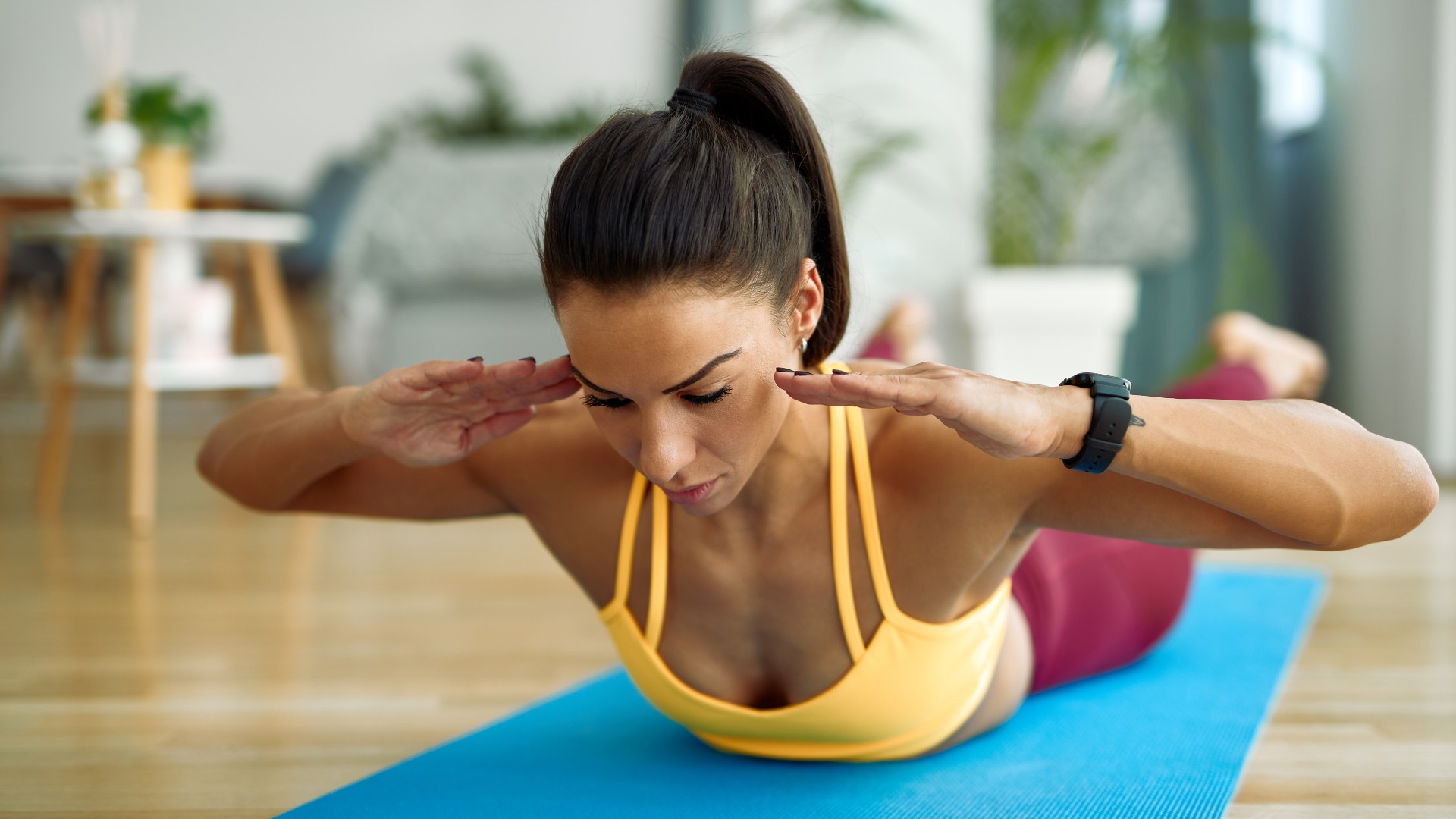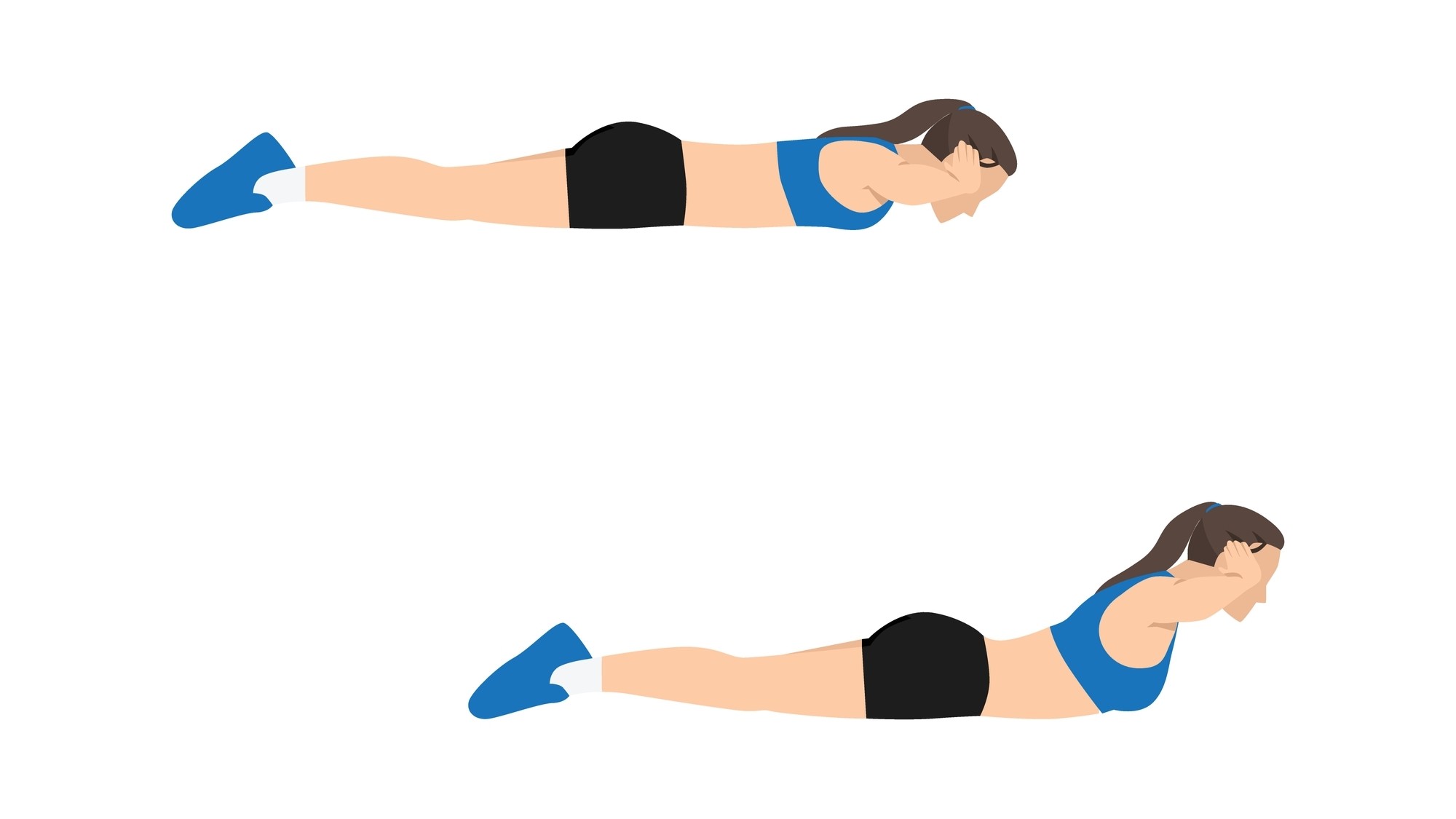
Back extensions, hyperextensions, Roman chair extensions — whatever you want to call them, this back exercise is brilliant at strengthening the muscles along the back of your body, known as the posterior chain, plus your core.
If you don’t have a gym handy, you might think you can’t perform the move. After all, you mostly see the back extension performed on the GHD machine or similar in the gym, which elevates your body away from the ground. However, as any Pilates enthusiast will already know, you can roll out one of the best yoga mats and perform the bodyweight back extension just about anywhere.
Here’s how to do the bodyweight back extension along with the benefits and tips for squeezing the most juice out of this strengthening exercise.
What are bodyweight back extensions?
Similar to the Superman exercise, which requires you to lift your chest, arms and legs together, the back extension is performed from the prone position (on your stomach). Instead, you’ll keep your legs and hips pressed gently into the mat and only lift your upper body, either extending both arms in front of you or placing them behind your head in the prisoner position.
As you lift and lower, the exercise mimics the hyperextension exercise performed from the bench if you don’t have access to one. However, you won’t be able to lean forward or add weights at your chest as you would performing them from height because you’ll be limited by the ground, reducing your overall range of motion.
That said, back extensions are still one of the best compound exercises for strengthening your back without weights — especially if you enjoy home workouts with little to no equipment.
Lifting extends the hips — a primary function of the glutes, which contract and push the hips forward, bringing your upper body to a horizontal position. The hamstrings help stabilize the hips and assist with movement.
How to do the bodyweight back extension

Start with 2-3 sets of 8-12 reps:
- Lay on the floor on your stomach.
- Place your hands lightly behind your head and look toward the top of your mat.
- Engage your core and gently squeeze your glutes and back.
- Keep your spine and neck neutral and pull your shoulder blades together.
- With control, on your exhale, lift your upper body away from the mat as high as you can. Look ahead.
- Pause and squeeze as many muscles as you can, then slowly lower to your starting position.
Back extensions hit the back, glutes and hamstrings, plus the core muscles. They build strength and stability in the muscles that support your spine and posture, including the erector spinae “spine huggers.”
These are the same muscles that work during deadlifts and toes-to-bar, so building strength and endurance here should translate to other exercises. It could even help keep you safe during functional training and heavy compound lifts, improve running efficiency and prevent injury.
Although you won’t get as much range of motion on the ground, the bodyweight variation still improves back activation and range of motion in your spine. You don’t just need to use this move if you don’t have access to gym equipment, though — the bodyweight back extension can help bridge the skillset gap if you’re not ready to use full hyperextension and flexion on a bench.
It’s also a great way to activate the glutes if you struggle with firing them up before workouts. Plus, "full" back extensions really do work. One study published in the Biology of Sport looked at the effects of a 10-week back extension program on back strength, muscle endurance and spinal range of motion. The research found significant improvements in back muscle strength and spinal range of motion following the program except in lumbar and sacrum flexion.
If you need some elevation but aren’t ready for the GHD machine for back extensions just yet, you could also practice the movement lying on a Swiss ball — it’ll challenge your stability and balance while offering a bridge between the ground and chest.







